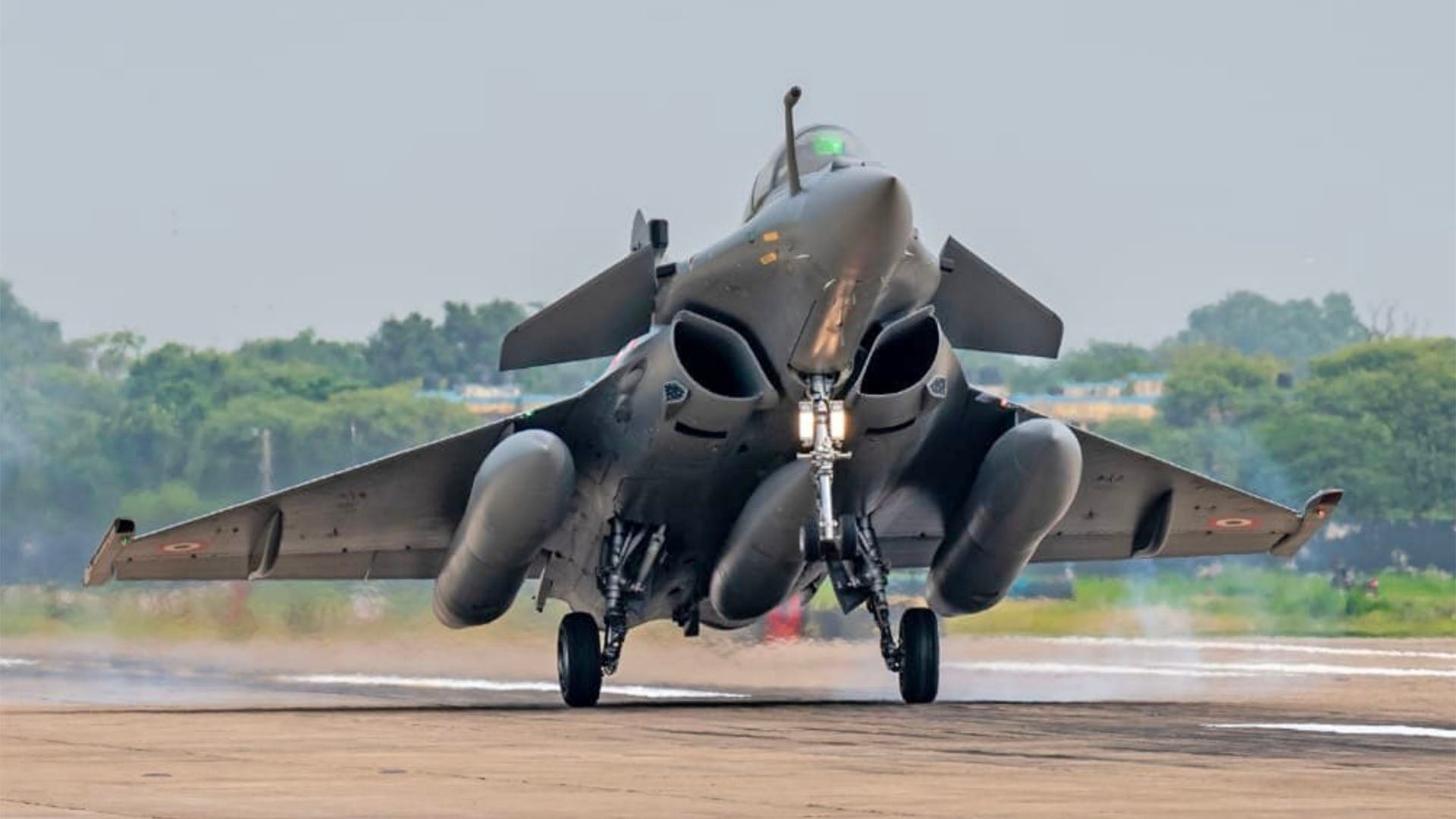Five brand-new Indian Air Force Dassault Rafale fighters recently touched down at Ambala Air Force Station in Haryana, India. The aircraft had departed from Dassault Aviation’s Bordeaux-Mérignac facility in France two days prior and made the over 5,000-mile journey supported by French tanker aircraft, with a stop-off at Al Dhafra in the United Arab Emirates.
The delivery had been planned for May 2020, but it was slightly delayed by the ongoing COVID-19 pandemic. The Rafales and their seven pilots were greeted by the Indian Air Force chief-of-staff, Air Chief Marshal RKS Bhadauria on July 29. Their arrival marked the first new residents for the base since India’s first Jaguar fighter-bombers were delivered there, coincidentally, on a similar date of July 27, 1979.
The Rafales are joining No. 17 Squadron “Golden Arrows” Squadron at Ambala. This is the first of at least two planned units that will fly the 36 Rafales that are currently on order as part of a €7.87-billion contract, or around $8.7 billion in U.S. dollars at the time, that was signed in 2016. All 36 aircraft are expected to be delivered by 2022 and they will be equally split with No. 101 “Falcons” Squadron, which will be re-established as the second Indian Rafale unit, based at Hashimara Air Force Station.

The Indian Air Force’s Rafales are built as F3-R-standard aircraft, but they come with some fascinating bespoke additions. A Dassault-owned, test-configured Rafale B with Indian-specific modifications started flying at Istres-Le Tubé in France in August 2018. It has progressively carried as many as 14 different Indian Air Force modifications to the baseline F3-R standard aircraft.
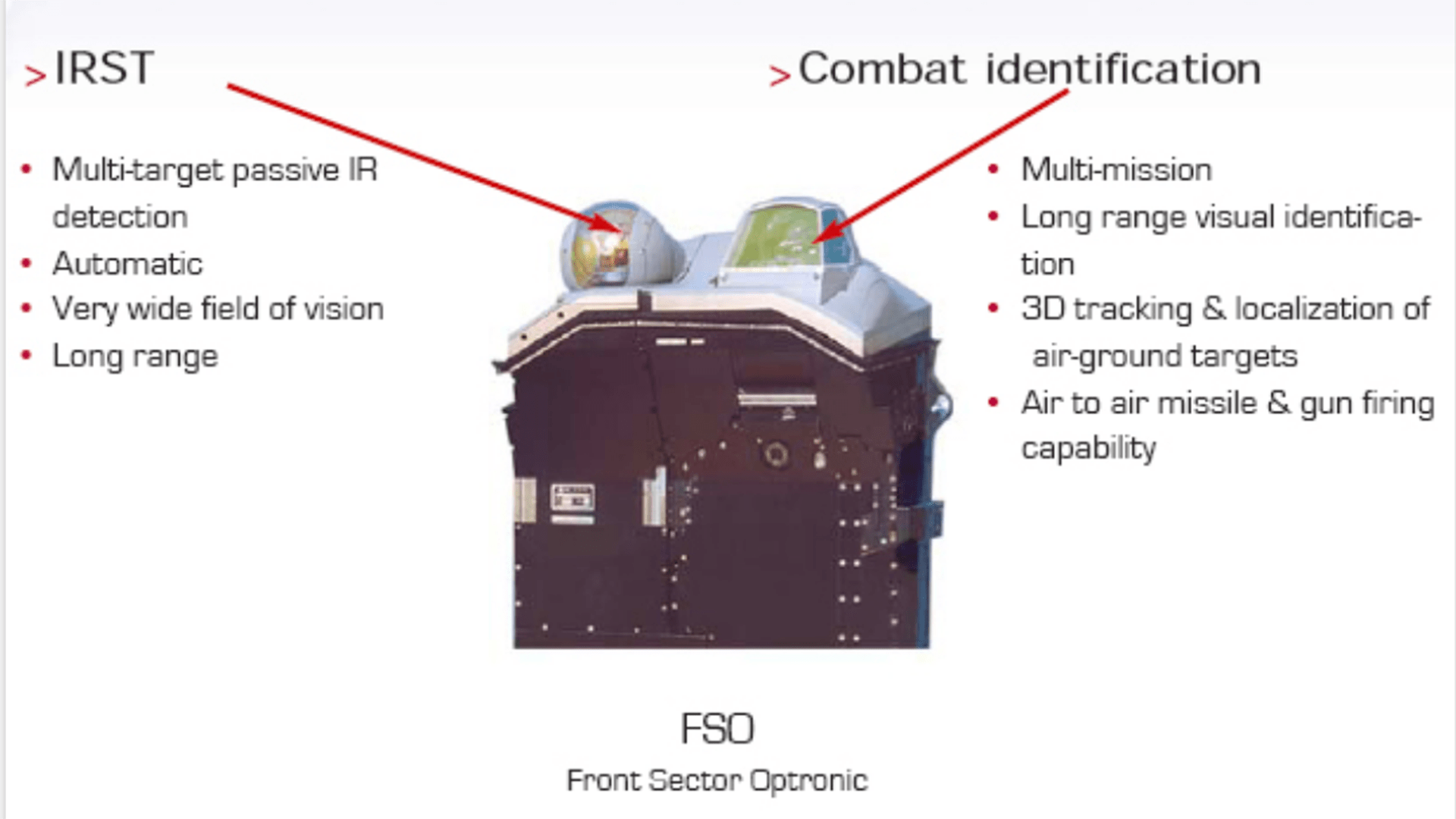
Indian Rafales feature an improved version of the Thales Front Sector Optronics (FSO) system, which includes SAGEM infra-red search-and-track (IRST). They also feature the Elbit Display and Sight Helmet (DASH), a modified radar altimeter for flying in mountainous terrain, plus a cold start engine capability for high-altitude airfield operations. They also include software modifications for the RBE2 active electronically scanned array (AESA) radar.
A new low-band podded jammer and a towed radar decoy are also being added, according to Angad Singh, an analyst at the Observer Research Foundation, in New Delhi. The additional Indian modifications are being added under a concurrent design, modification, test, and certification schedule. “Everything will be integrated and certified around the time the last jets are ready for delivery [in April 2022]. At which point modification kits will be shipped out and all jets will be brought up to the same specification,” Singh added.
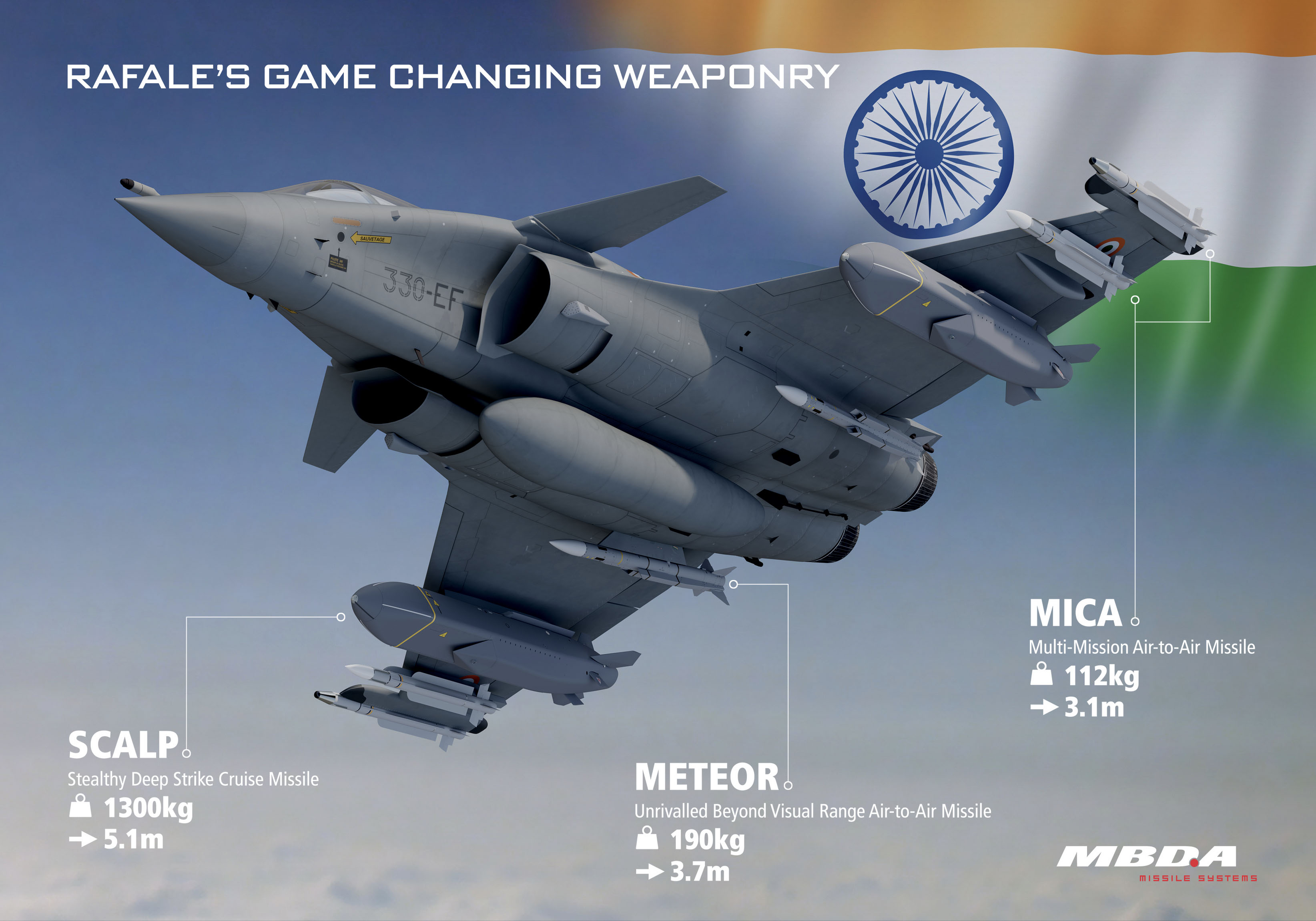
The weapons package that accompanies the Rafale procurement includes the MBDA Meteor beyond-visual-range air-to-air missile (BVRAAM), both infre-red and radar-guided versions of the MICA Multi-Mission Air-to-Air Missiles, and the Scalp long-range cruise missile. Shortly before the delivery of the first five aircraft, it was announced that the Indian Air Force would also procure the Sagem HAMMER (Highly Agile Modular Munition Extended Range), also known as Armement Air-Sol Modulaire (AASM), to meet an urgent operational requirement for the new Rafales amid a serious face-off against China. These weapons would be ideally suited to taking out buried targets in mountainous locations such as Eastern Ladakh.
The Indian Air Force previously planned to integrate the Rafael SPICE (Smart, Precise Impact, Cost-Effective) weapon on its Rafales in-country. According to Singh this weapon was selected on cost grounds, however, the pressing requirement has resulted in the Air Force opting for a ready-baked solution for the Rafale in HAMMER.
The Rafale F3 variant is now France’s primary nuclear-capable combat aircraft. The Indian Rafales are rumored to be similarly capable, but India has never confirmed if that capability exists in any of its fighter aircraft.

The arrival of the first Rafales was met with huge public interest amid public outcry over spikes in tension with Pakistan. Prime Minister Narendra Modi has taken a hard line against Pakistan, with recent aerial skirmishes being leveraged to support the Rafale procurement. Modi himself said that Wing Commander Abhinandan Varthaman’s February 2019 shoot down when he was at the controls of an upgraded MiG-21 Bison would not have happened had he been flying a Rafale.
India’s long-running fighter procurement saga started under the Medium Multi-Role Combat Aircraft (MMRCA) program, which dates back to 2004. The protracted effort has been run alongside the indigenous Tejas Light Combat Aircraft (LCA) project, which is a light strike fighter built by Hindustan Aeronautics Ltd (HAL). The Tejas is now entering service with a pair of squadrons after significant development delays.
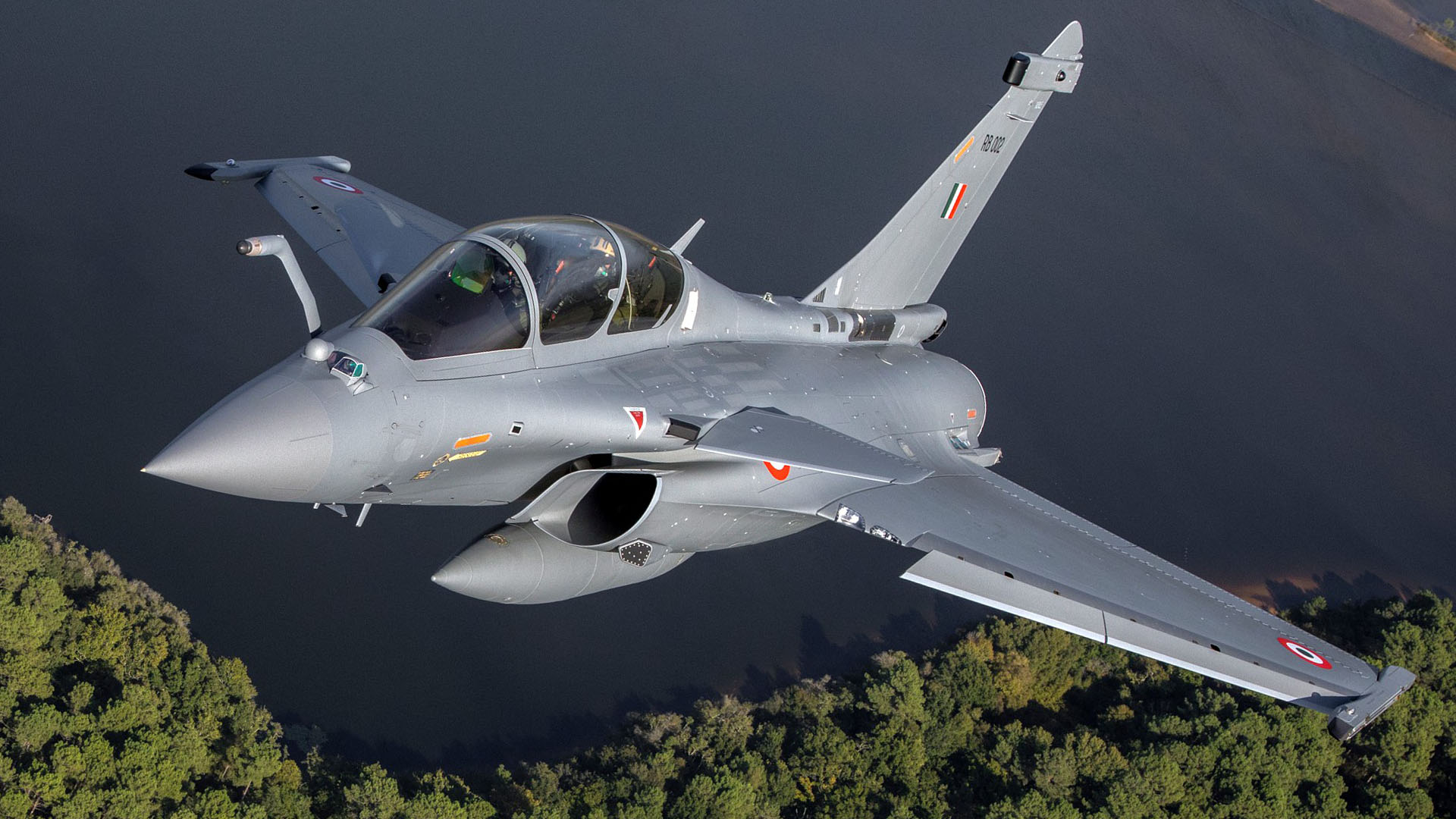
India’s MMRCA project was set against the replacement of its aging MiG-21 Bisons and MiG-27s, the latter of which was retired at the end of 2019. An initial competition included the Rafale, along with the Eurofighter, Gripen, F-16, MiG-35, and Super Hornet. India shortlisted the Rafale and the Eurofighter in April 2011, and after a long and exhaustive evaluation process, the French fighter was declared the winner on January 31 the following year. MMRCA was set as a 126-aircraft requirement, and it mandated that 108 jets should be built locally by HAL.
However, after several rounds of negotiations, the MMRCA program broke down in April 2015. Instead, India said it would purchase 36 Rafales under a government-to-government contract, but with no local production. A contract for 36 Rafales was signed in New Delhi on September 23, 2016, and it included a possible follow-on sale of 36 additional aircraft. The initial batch includes 28 single-seat Rafale EH models and eight two-seat DHs.
France has proved a reliable partner for India, having participated in a number of fighter projects, including the supply of Mirage 2000 fighters. Dassault is also currently supporting a comprehensive upgrade effort for India’s Mirages.
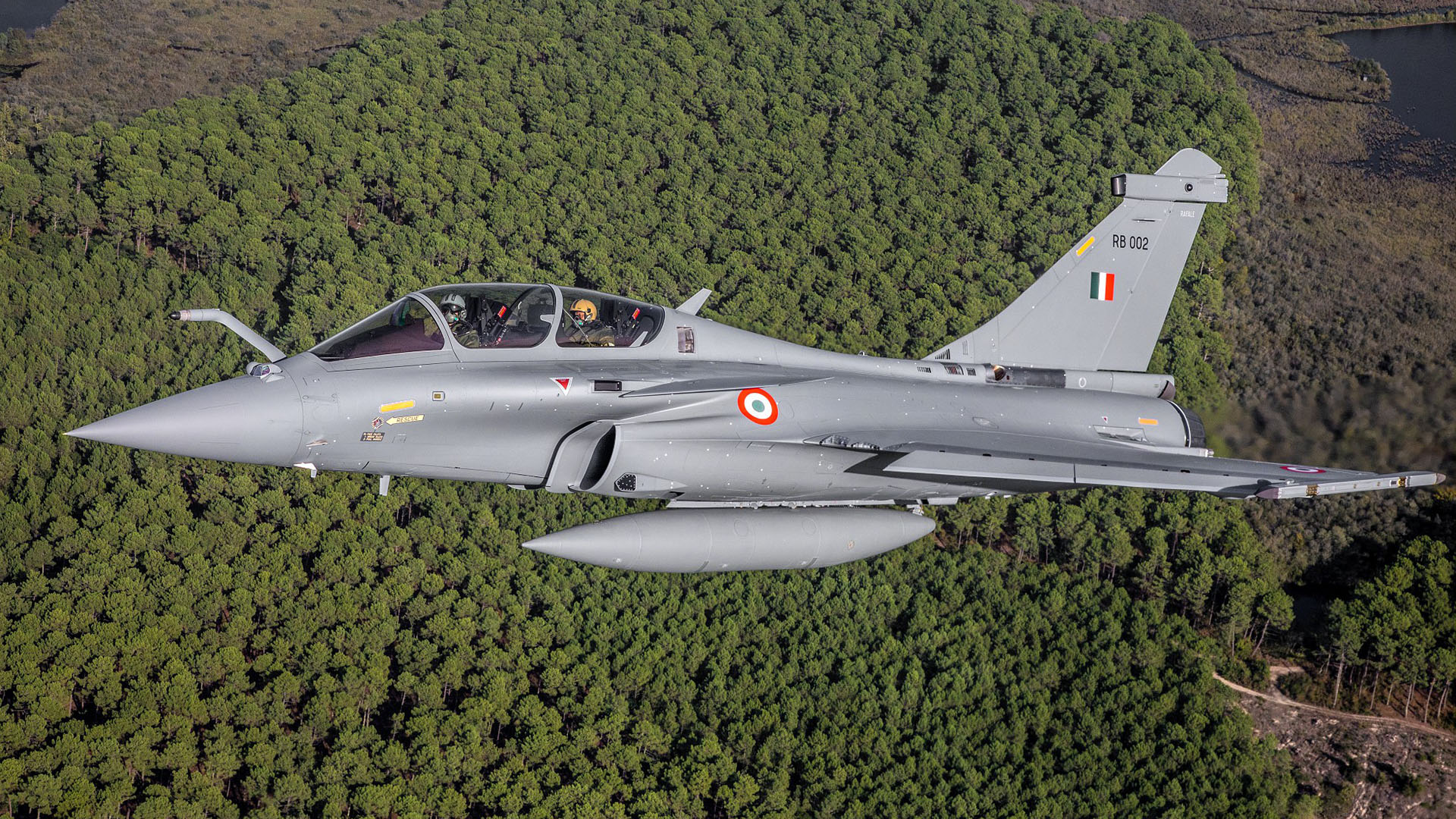
First Indian Rafale to fly was DH serial RB008, which made its maiden flight on October 30, 2018, from Bordeaux-Mérignac. This aircraft is supporting the test and certification of the India-specific enhancements. Rafale DH serial RB001 followed by making its first flight at Mérignac on July 17, 2019. This two-seater was formally handed over to the Indian government on October 8, 2019, at an event hosted by Dassault chairman and CEO Eric Trappier with guests including India’s defense minister Shri Rajnath Singh.
With MMRCA abandoned and at least 36 Rafales on order, India has now launched yet another fighter tender. On April 6, 2018, it issued a Request for Information (RFI) for “approximately 110 aircraft,” roughly one quarter of which it said should be two-seaters. New Delhi specified that no more than 15% of the jets would be manufactured by the winning manufacturer, with the balance being built locally under the “Make in India” initiative.
The key points of the RFI include an openness for single and twin-engine jets, a requirement for air superiority missions at 20,000ft (6,096m), low-level ingress, strike and egress at 492ft [150m]) and anti-shipping capabilities have been mandated. In addition to an option for more Rafales, Boeing is set to offer either the Advanced F-15 or Block III Super Hornet, with Lockheed Martin touting a tailored F-16 design dubbed the F-21. In addition are the Eurofighter Typhoon, the Saab JAS 39 Gripen E, the MiG-35 “Fulcrum,” and the Su-35 “Flanker.”
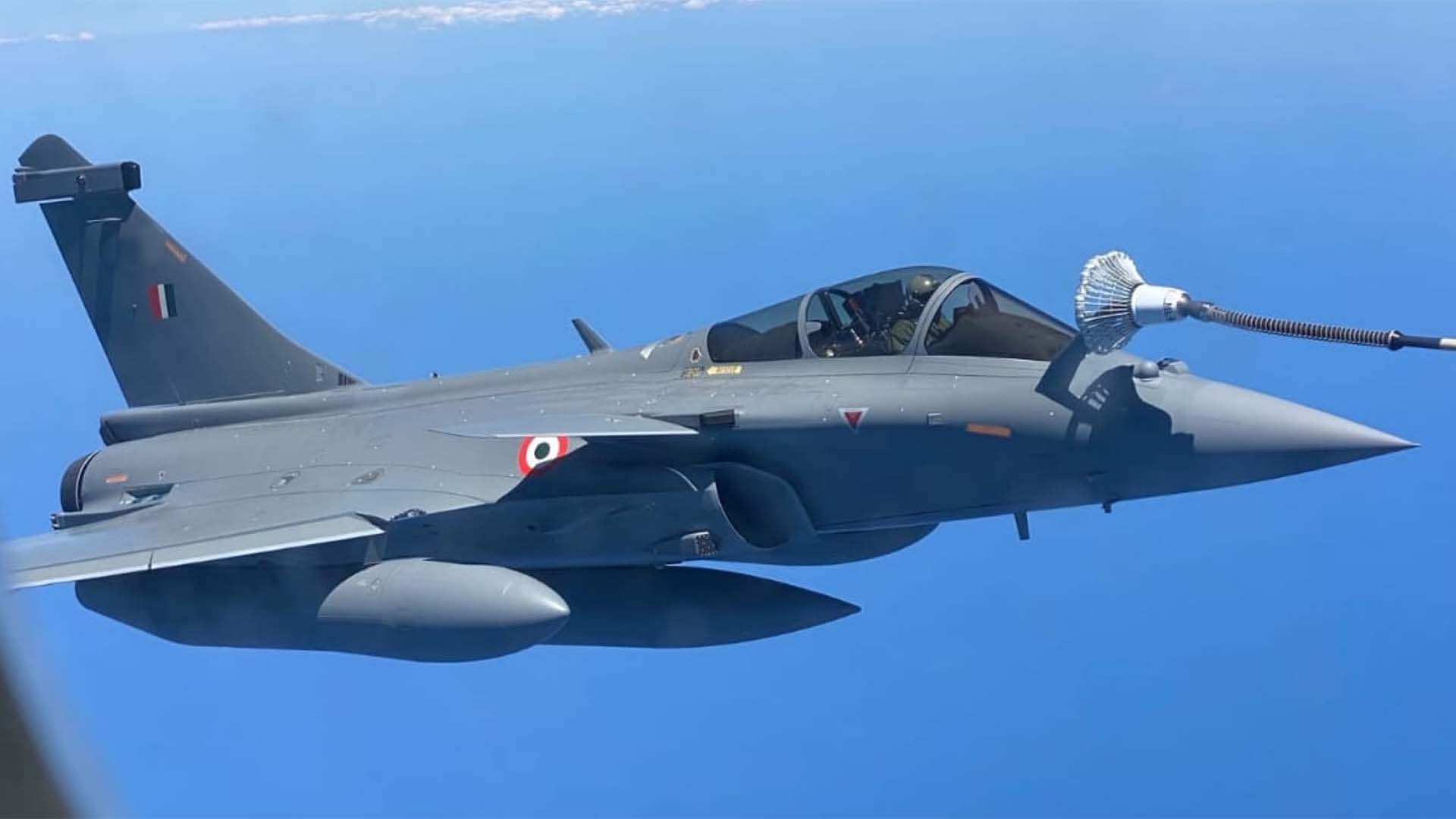
The Indian Navy too is searching for a new fighter now that the naval variant of HAL’s LCA has been deemed unsuitable for carrier operations. The Navy says it wants a powerful twin-engine fighter that would ultimately replace its MiG-29Ks. This puts both the Rafale and the Super Hornet squarely in the running, with eyes on potential synergies with the Indian Air Force’s new fighters.
The reaction to the first Rafales arriving at Ambala speaks volumes about a national perspective on the pressing need to recapitalize an ageing fighter fleet of MiG-21s, which is set against the backdrop of pressure from both China and Pakistan.
The arrival of five fighters is just the first stage of a potentially huge influx of new fighters to India, which will operate from both land and sea, in the years to come. With a host of exotic optional extras added to its Rafales by the spring of 2022, the French replacement for tired Russian MiGs is shaping up to be very impressive indeed.
Contact the author: Jamie@thedrive.com
